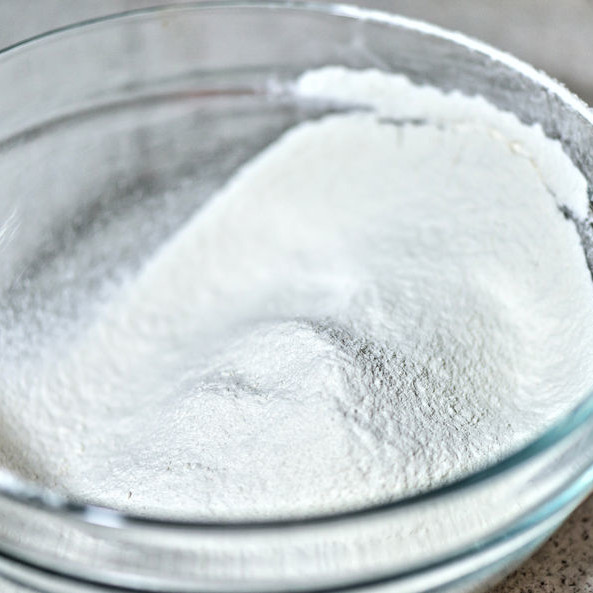
Benzoyl Peroxide
What is Benzoyl Peroxide?
Benzoyl peroxide is an ingredient added to flour in small quantities for oxidizing carotenoid pigments in the flour. This leads to the whitening or bleaching of the flour, which is part of the usual treatment performed on flour at the mill. Benzoyl peroxide is the main whitening agent used by millers in producing white bread flour for bakery products.
Origin
Benzoyl peroxide is a colourless and crystalline solid. It is insoluble in water, slightly soluble in alcohol, and soluble in organic compounds such as chloroform and ether.1
It can be synthesized in three steps from bromobenzene. This process includes:
- A Grignard reaction to turn bromobenzene into benzoic acid
- Nucleophilic acyl substitution to transform the resulting carboxylic acid into an acid chloride
- The addition of H2O2/NaOH to the acid chloride to yield benzoyl peroxide2
The chemical formula is (C6H5CO)2O2.
Function
When benzoyl peroxide is used as a bleaching agent, it reacts with the oxidizable substance present, such as yellow carotenoid pigments or xanthophylls—which is responsible for the creamy color of the freshly milled flour.
Application
Benzoyl peroxide is the preferred bleaching agent for hard wheat flours. It is added to flour as a dry powder and slowly bleaches the flour over a couple of days. It is a powerful oxidizing agent that has a whitening effect, but no maturing action.
Recommended treatment is 0.25 to 1.0 ounce per 100 pounds of flour. In their Chemical and Technical Assessment papers, The Food and Agriculture Organization of the United Nations (FAO), recommends its usage to be in the range of 40–75 mg/kg flour.1
Due to its explosive nature and for plant safety reasons, benzoyl peroxide is usually diluted with a carrier/filler which in most cases is a mixture of corn/potato starch and tricalcium phosphate. A premix of 15–30% benzoyl peroxide and 85–70% starch-tricalcium phosphate is commonly used for dosing.1
Application of the mixture at a level of 0.001% based on flour weight can bleach out most of the color in 24 hours.3 It only bleaches flour pigments and has no effect on the breadmaking or baking properties.
FDA Regulation
In accordance with 21 CFR 184 “Direct Food Substances Affirmed As Generally Recognized As Safe” and 21 CFR § 137.105 “Cereal Flours and Related Products,” benzoyl peroxide can be used as a direct human food ingredient with no limitation other than current GMPs.4,5
References
- Smith, J. “Flour Additives” Food Additives Data Book, 2nd edition, Blackwell Publishing Ltd., 2011, pp. 550–551.
- A Three-Step Synthesis of Benzoyl Peroxide Brenda Her, Alexandra Jones, and James W. Wollack Journal of Chemical Education 2014 91 (9), 1491-1494 DOI: 10.1021/ed400240k.
- Posner, E.S. “Flour Handling and Blending.” Wheat Flour Milling, 2nd printing, AACC International, Inc., 2011, pp. 314–315.
- U.S. Food and Drug Administration. “21 CFR 184 – Direct Food Substances Affirmed As Generally Recognized As Safe.” 1 Apr. 2017, https://www.accessdata.fda.gov/scripts/cdrh/cfdocs/cfcfr/CFRSearch.cfm?CFRPart=184. Accessed 19 May 2018.
- U.S. Food and Drug Administration. “21 CFR 137 – Cereal Flours and Related Products.” 1 Apr. 2017, https://www.accessdata.fda.gov/scripts/cdrh/cfdocs/cfcfr/CFRSearch.cfm?CFRPart=137. Accessed 19 May 2018.

